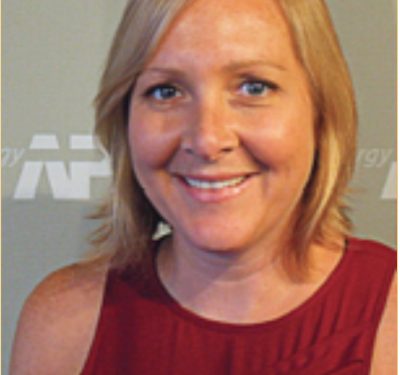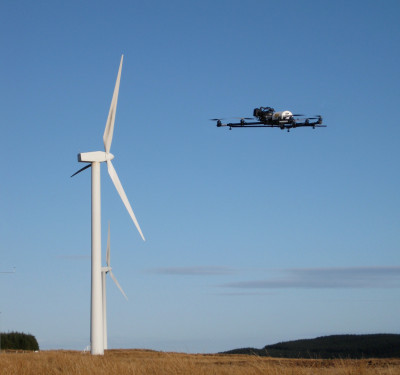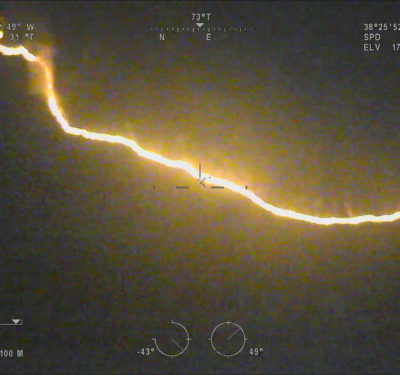Dr. Paul MacCready Jr. – Flying Toward A Vision
IN GREEK MYTHOLOGY, Icarus, fueled by hubris, flew too close to the sun and perished.
During the Renaissance, Leonardo Da Vinci’s images of human-mechanical flight drew on the flapping wings of nature.
But centuries later, it would be an American named Paul B. MacCready Jr. who earned the sobriquet “father of human-powered flight.” MacCready’s vision, inquisitiveness and technologies would realize Leonardo’s dreams. They also would launch the 50-year success of AeroVironment, whose corporate purpose is “to secure lives and advance sustainability through transformative innovation.”
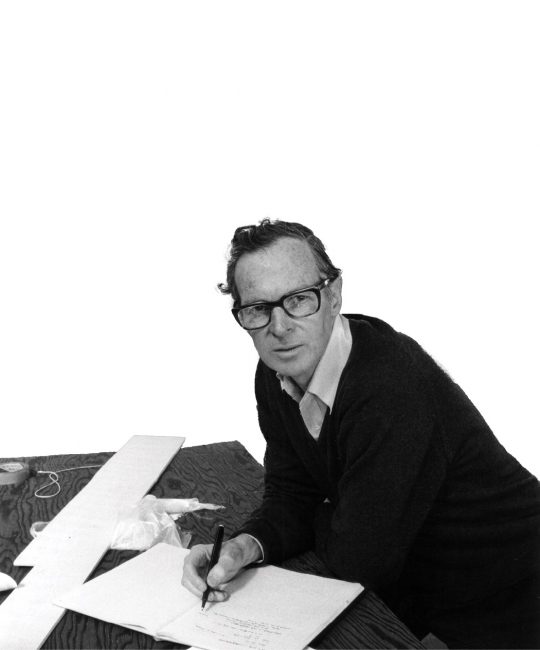
LIFTOFF
Born in 1925 in Connecticut, MacCready described his adolescent self as small and unathletic. But rather than becoming a Depression-era benchwarmer, he found pleasure in building model airplanes, some of them unusual. That fervor would grow into a daring exploration of unconventional solutions—and eventual recognition as one of Time magazine’s “Century’s Greatest Minds.”
“I knew Dr. MacCready personally,” recalled Gorik Hossepian,” vice president, product line management at AeroVironment. “What stuck out to me in his approach to doing business really was absolutely no fear of failure whatsoever. He looked at failures as opportunities to learn and to some extent that philosophy still exists in this company, where when we try something and it doesn’t work, it’s not a disappointment. It’s something we’ve learned from.”
From the start, MacCready fused flight’s theoretical and practical sides. A bachelor’s degree in physics (Yale) was balanced by flight training as a naval aviator during World War II. Soon after, his curiosity morphed into a love of gliders and sailplanes. He won several U.S. soaring competitions even as he completed a master’s degree in physics and a PhD in aeronautics (both from Caltech), and in 1956 he became the first American World Soaring Champion. He also invented the “MacCready speed ring” to predict the best speed for a glider to fly at.
In 1951, MacCready’s aeronautic interests found a business outlet. Meteorology Research Inc. pioneered instrument use for storm studies. So, when AeroVironment was founded in 1971, it triangulated aeronautics, alternative energy and atmospherics.
“His big idea was to apply aerodynamics and aerospace design to environmental challenges,” said Steve Gitlin, AeroVironment’s chief marketing officer. “He and his small group of really bright, fearless engineers and geniuses sought out things that had never been done before, and did them, and then went on to the next ones. They didn’t really have a mindset of creating a human-powered airplane, for example. They did it because it had never been done.”
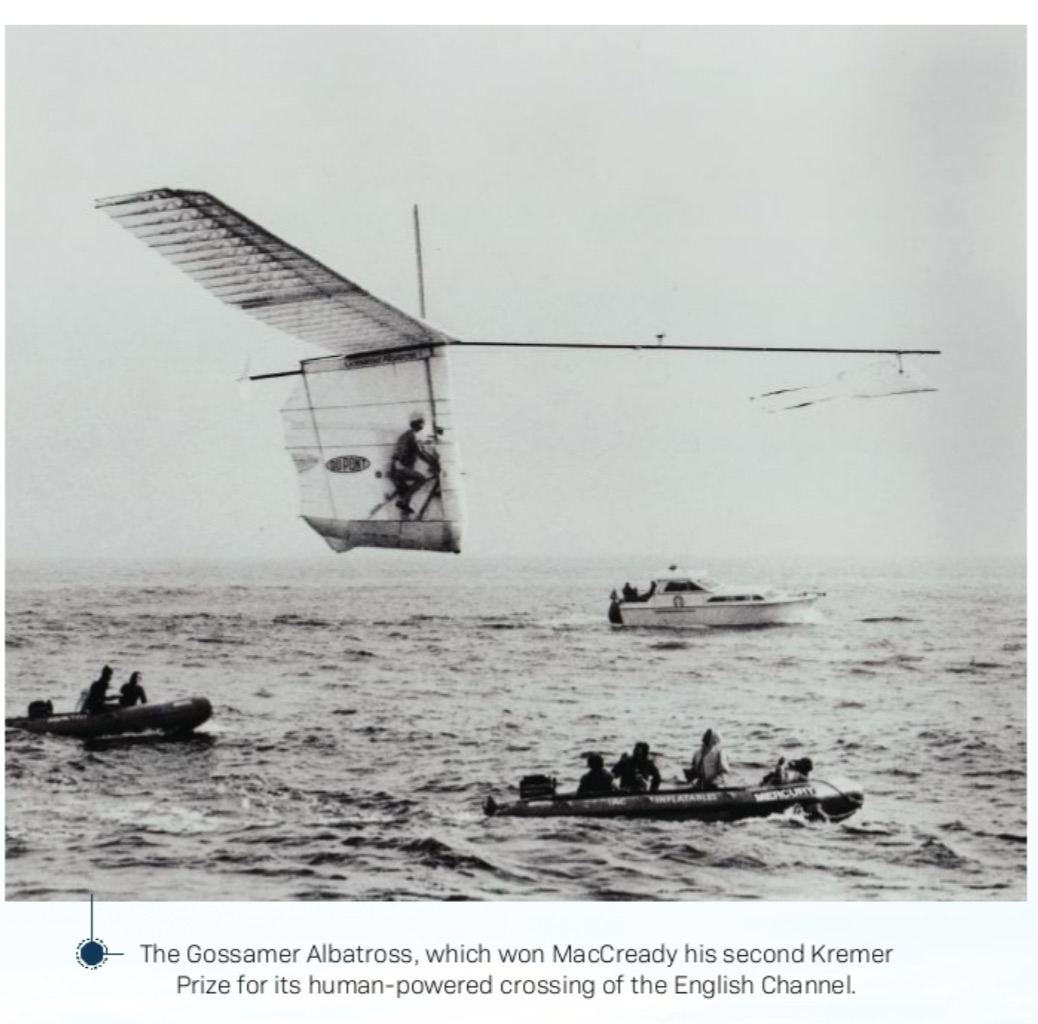
REVERSAL AND REWARD
Ironically, a business failure would empower MacCready’s run of innovations. By the 1970s, now-Doctor MacCready had accumulated the wherewithal to guarantee a friend’s $100,000 business loan. But that company’s foundering made necessity the mother of human-powered-flight invention. Needing to cover the deficit, MacCready and a collaborator created the Gossamer Condor out of aluminum tubes, plastic sheeting—and piano wire and Scotch tape—to compete for the £50,000 Kremer prize in 1977. Slow, light and efficient, the Condor’s seven-minute sojourn over California won the day, proving the viability of sustained, human-powered-and-controlled flight. The Kremer-Gossamer success story continued when in 1979 the Gossamer Albatross won MacCready his second Kremer prize—and £100,000—as the first human-powered air vehicle to cross the English Channel.
“One of the key elements, especially in those early days was, and I think it’s true now, actually is passion,” said Scott Newbern, AeroVironment’s chief technology officer. “The company was made up of a bunch of aviation enthusiasts, model airplane people. That Kremer prize was what they were about; the passion to stick with it and achieve what seemed to be an impossible accomplishment.
“When we talk to our customers, we don’t say, ‘What is the product you want?’ We say, ‘What is the problem you’re trying to solve?’” Newbern continued. “The other piece MacCready drove was the simplicity and elegance of the solutions.”
This successful reframing of objectives was exemplified by the Sunraycer, a lightweight, low-drag AeroVironment/General Motors/Hughes Electronics collaboration that won the first solar car race in 1987. “I think the way people approached it was, ‘How do you put a solar panel on a car?’ vice president of business development and sales Rick Pedigo noted. “MacCready approached it as, ‘How do you put wheels on a solar panel?’”
HIGHER AND HIGHER
Subsequent MacCready efforts gained altitude, often in concert with major partners. The Gossamer Penguin made the first climbing flight solely powered by sunbeams, in 1980. A facsimile of a prehistoric flying pterosaur, commissioned by the Smithsonian Institution, flew over Death Valley in 1986. Four generations of HALE (high altitude long endurance) vehicles were developed in concert with NASA; in 2001, Helios, a fourth-generation solar/fuel cell flying wing, set a world altitude record (nearly 97,000 feet) for sustained horizontal flight by a winged aircraft.
Other projects fed more directly into business development. In 1981 the Solar Challenger, sponsored by DuPont, reversed the Kremer triumph by flying 163 miles from Paris to England—in part to demonstrate the value of photovoltaic cells. A collaboration with General Motors on the EV1 consumer electric car would flow into the growth of an AeroVironment electric vehicle infrastructure division (divested in 2018). This accumulated expertise would support the electric-powered, hand-launched UAVs whose real-time airborne reconnaissance, surveillance and communication solutions would become the core of AeroVironment’s future. The compactness and nimbleness of those UAVs echo the models that first attracted MacCready to flight.
By the time MacCready himself ascended to the heavens, in 2007, his vision had been manifested in the company’s MacCready Works lab. Most recently, the lab’s novel problem-solving has informed the Mars Helicopter, which NASA plans to fly on that thin-atmosphere planet in 2021.
Throughout, MacCready’s work and legacy have mirrored a thought he often voiced to conclude his talks: “We humans…have grown in population, technology and intelligence to a position of terrible power: we now wield the paintbrush.” That challenge and opportunity has driven AeroVironment’s five-decades-and-counting commitment to innovation and imagination, as both core values and competitive advantages.



